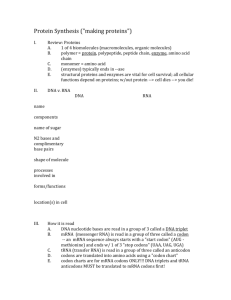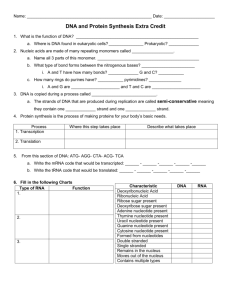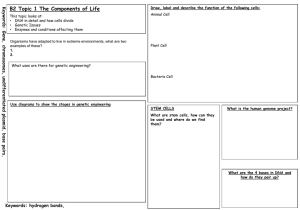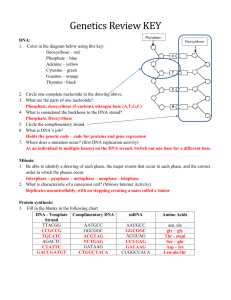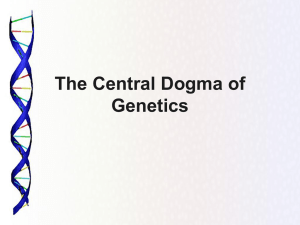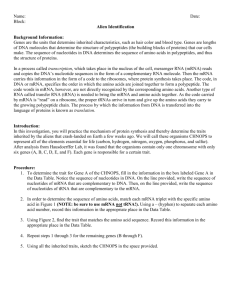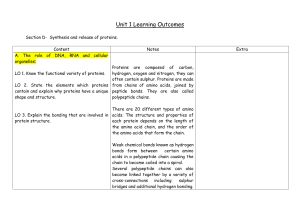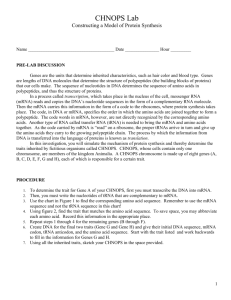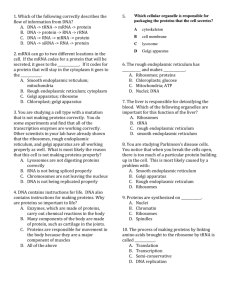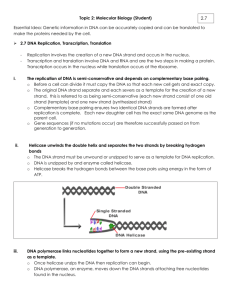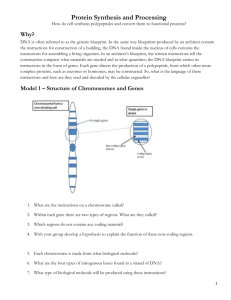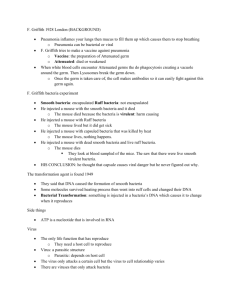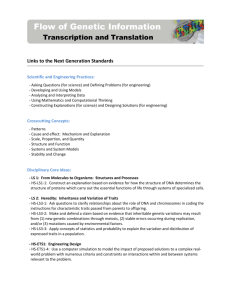translation found
advertisement
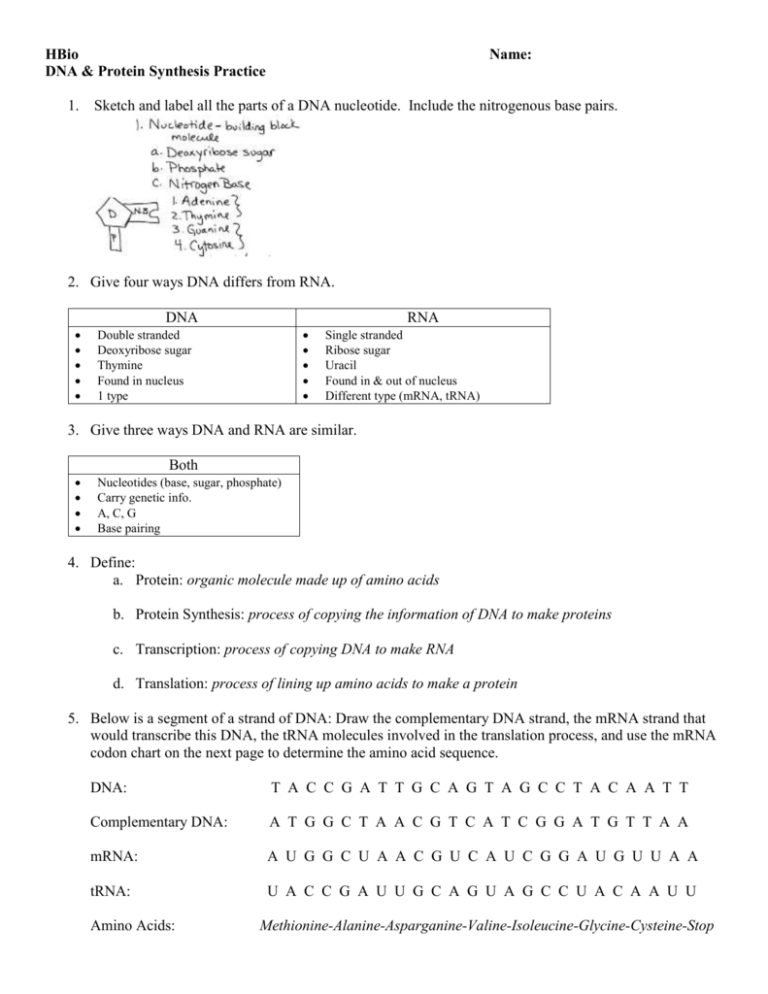
HBio DNA & Protein Synthesis Practice 1. Name: Sketch and label all the parts of a DNA nucleotide. Include the nitrogenous base pairs. 2. Give four ways DNA differs from RNA. DNA RNA Double stranded Deoxyribose sugar Thymine Found in nucleus 1 type Single stranded Ribose sugar Uracil Found in & out of nucleus Different type (mRNA, tRNA) 3. Give three ways DNA and RNA are similar. Both Nucleotides (base, sugar, phosphate) Carry genetic info. A, C, G Base pairing 4. Define: a. Protein: organic molecule made up of amino acids b. Protein Synthesis: process of copying the information of DNA to make proteins c. Transcription: process of copying DNA to make RNA d. Translation: process of lining up amino acids to make a protein 5. Below is a segment of a strand of DNA: Draw the complementary DNA strand, the mRNA strand that would transcribe this DNA, the tRNA molecules involved in the translation process, and use the mRNA codon chart on the next page to determine the amino acid sequence. DNA: T A C C G A T T G C A G T A G C C T A C A A T T Complementary DNA: A T G G C T A A C G T C A T C G G A T G T T A A mRNA: A U G G C U A A C G U C A U C G G A U G U U A A tRNA: U A C C G A U U G C A G U A G C C U A C A A U U Amino Acids: Methionine-Alanine-Asparganine-Valine-Isoleucine-Glycine-Cysteine-Stop 6. What are 3-4 functions of proteins? Proteins are in charge of or involved in most cellular functions Examples- hormones, enzymes, cell membrane proteins (channel, transport, marker, etc.), muscle contraction proteins, transport proteins (hemoglobin), antibodies, etc. etc. etc. 7. What role does a ribosome play in protein synthesis and where are ribosomes found? It is the site of protein synthesis, specifically translation. Ribosomes are found in your cell’s cytoplasm. 8. Where are amino acids found in a cell and how are they transported? They are found in the cytoplasm of the cell and are transported by the tRNA. 9. There are only 20 amino acids, but millions of different proteins. Explain how that can be. The number and sequence of amino acids is specific to different proteins. 10. Label A-G on the diagram below. A - DNA B - Nucleus C – mRNA Or Transcription D - peptide (bond) G – amino acid E – tRNA or translation F - ribosome 11. Arrange the following events of protein synthesis that are shown in the picture above. ____5____ tRNA brings amino acids to the ribosomes ____1____ Enzymes split apart the DNA strand ____9____ mRNA and tRNA are released from the ribosome ____4____ mRNA attaches to the ribosome ____7____ amino acids bond together with peptide bonds to form a protein ____2____ mRNA nucleotides match up to the exposed DNA bases ____8____ a completed protein is released from the ribosome ____6____ tRNA bases match up with the mRNA bases at the ribosome ____3____ mRNA strand leaves the nucleus and moves to the cytoplasm

